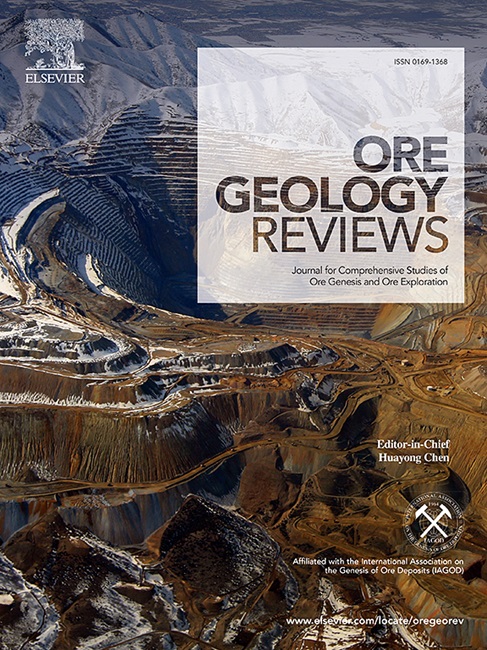Knowledge graph construction with BERT-BiLSTM-IDCNN-CRF and graph algorithms for metallogenic pattern discovery: A case study of pegmatite-type lithium deposits in China
IF 3.2
2区 地球科学
Q1 GEOLOGY
引用次数: 0
Abstract
Compared to traditional geological data processing methods, knowledge graphs are more effective in calculating and processing the associated information and implicit geological knowledge within the data, helping to accurately grasp the underlying patterns and relationships of geological phenomena. To further optimize the semantic representation of geological text data and extract more detailed feature information, this study introduces the dilated convolutional neural network (IDCNN) layer into the Bert-BiLSTM-CRF model, constructing the Bert-BiLSTM-IDCNN-CRF framework for the precise extraction of lithium deposit named entities.This framework is then used to construct a knowledge graph for granite (pegmatite) lithium deposits in China. Experimental results demonstrate that the Bert-BiLSTM-IDCNN-CRF model exhibits excellent performance in processing Chinese geological text data, achieving a precision of 89%, a recall rate of 87%, and an F1 score of 88%. These results confirm the model's high effectiveness in geological named entity recognition and extraction tasks. Based on this, the study further employs centrality and similarity algorithms from graph theory to deeply analyze the metallogenic characteristics and potential patterns of lithium deposits. This analysis successfully identifies key influencing factors and core nodes for each lithium belt, providing a solid scientific foundation for subsequent lithium exploration target area delineation.

与传统的地质数据处理方法相比,知识图谱能更有效地计算和处理数据中的关联信息和隐含地质知识,有助于准确把握地质现象的内在规律和关系。为了进一步优化地质文本数据的语义表征,提取更详细的特征信息,本研究在Bert-BiLSTM-CRF模型中引入了扩张卷积神经网络(IDCNN)层,构建了Bert-BiLSTM-IDCNN-CRF框架,用于精确提取锂矿床命名实体。实验结果表明,Bert-BiLSTM-IDCNN-CRF 模型在处理中文地质文本数据时表现出色,精确率达到 89%,召回率达到 87%,F1 分数达到 88%。这些结果证实了该模型在地质命名实体识别和提取任务中的高效性。在此基础上,研究进一步采用图论中的中心性和相似性算法,深入分析了锂矿床的成矿特征和潜在模式。该分析成功识别了各锂矿带的关键影响因素和核心节点,为后续的锂矿勘探目标区划分提供了坚实的科学基础。
本文章由计算机程序翻译,如有差异,请以英文原文为准。
求助全文
约1分钟内获得全文
求助全文
来源期刊

Ore Geology Reviews
地学-地质学
CiteScore
6.50
自引率
27.30%
发文量
546
审稿时长
22.9 weeks
期刊介绍:
Ore Geology Reviews aims to familiarize all earth scientists with recent advances in a number of interconnected disciplines related to the study of, and search for, ore deposits. The reviews range from brief to longer contributions, but the journal preferentially publishes manuscripts that fill the niche between the commonly shorter journal articles and the comprehensive book coverages, and thus has a special appeal to many authors and readers.
 求助内容:
求助内容: 应助结果提醒方式:
应助结果提醒方式:


